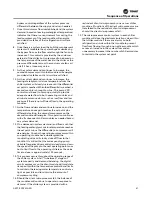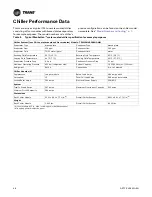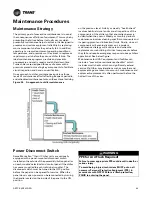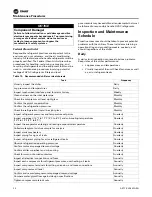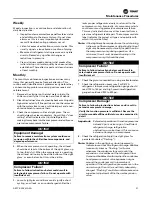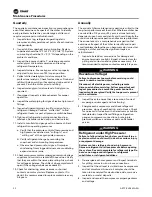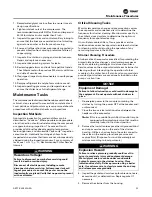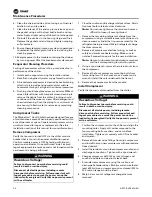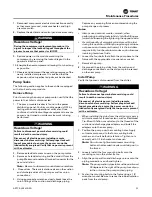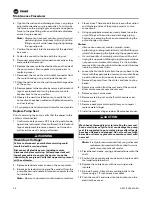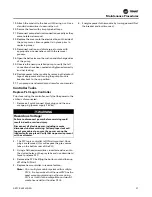
42
ARTC-SVX002A-EN
Controls Interface
Microprocessor Control System
Manhattan™ Gen II Chiller models employ a Carel c.pCO
all-digital data control system to control and report key
system settings and indicators.
Client Microprocessor Controller
Both the Client and Server modules use a Carel c.pCO
medium microprocessor controller. The client
microprocessor controller rotates the lead compressors
every 168 system operating hours. See below figure.
Server Microprocessor Controller
In a normal configuration, a server controller controls the
single module to which it is dedicated. The distributed
client microprocessor controller system enables the chiller
to operate in the event the client microprocessor controller
fails; the system automatically fails-over to distributed
client control where each server controller operates its
own module but lacks the ability to rotate the lead
compressors every 168 system operating hours.
Touchscreen Interface Panel
The touchscreen interface panel is the primary means for
controlling and monitoring the system for the operator
and maintainer. See above figure.
Operator Control and Monitoring
Each system is provided with a touchscreen interface
panel that is used to turn the chiller ON and OFF, adjust set
points, clear alarms, and perform detailed set-up of the
microprocessor controllers.
Chiller Control
The operator uses three different types of controls and
indicators to monitor and maintain the desired operating
parameters in the Manhattan™ Gen II Chiller. These
controls and indicators are located in the power panels
and the microprocessor controllers.
Power Distribution
There are two different electrical panels used in the
Manhattan™ Gen II Chiller. The main power distribution
panel receives power from the building source and
distributes it to the individual chiller modules. The module
electrical and control panel receives power from the
power distribution panel and provides power to individual
electrical components.
Figure 20.
c.pCO client controller
Figure 21.
Touchscreen interface panel with heat
recovery data
WARNING
Hazardous Voltage!
Failure to disconnect power before servicing could
result in death or serious injury.
Disconnect all electric power, including remote
disconnects before servicing. Follow proper lockout/
tagout procedures to ensure the power can not be
inadvertently energized. Verify that no power is present
with a voltmeter.




















